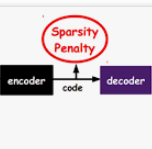The geometric reinterpretation of the Finite Element Method (FEM) shows that Raviart Thomas and Nedelec mass matrices map from degrees of freedoms (DoFs) attached to geometric elements of a tetrahedral grid to DoFs attached to the barycentric dual grid. The algebraic inverses of the mass matrices map DoFs attached to the barycentric dual grid back to DoFs attached to the corresponding primal tetrahedral grid, but they are of limited practical use since they are dense. In this paper we present a new geometric construction of sparse inverse mass matrices for arbitrary tetrahedral grids and possibly anisotropic materials, debunking the conventional wisdom that the barycentric dual grid prohibits a sparse representation for inverse mass matrices. In particular, we provide a unified framework for the construction of both edge and face mass matrices and their sparse inverses. Such a unifying principle relies on novel geometric reconstruction formulas, from which, according to a well established design strategy, local mass matrices are constructed as the sum of a consistent and a stabilization term. A major difference with the approaches proposed so far is that the consistent term is defined geometrically and explicitly, that is, without the necessity of computing the inverses of local matrices. This provides a sensible speedup and an easier implementation. We use these new sparse inverse mass matrices to discretize a three dimensional Poisson problem, providing the comparison between the results obtained by various formulations on a benchmark problem with analytical solution.
翻译:精度元素法(FEM)的几何重新解释显示,Raviart Thomas和Nedelec质量矩阵图从自由度(DoFs)到自由度(DoFs),从自由度(DoFs)的四面网格的几何元素到与巴以中心双重网格的多Fs。质量矩阵图DOFs的代数反向(DoFs),与与此相对的原始四面网格(Fs)的粗度双向双向网(DoFs)的双向双向双向网格(DoFs)相连接。这种统一的原则取决于新型的几何重建公式,而根据各种既定的设计战略,本地质量矩阵是作为任意四面网格和可能的反向流质材料的合成而构建的新的几何质量矩阵,从而削弱了传统智慧,即以粗度为中心的双向面网格网格网格(Bs)禁止对反面矩阵进行稀松散的表达。 一种与直径直径直径直径直径的计算的方法提供了一种直径直径直径直径直径直径直径的基基基的基数。




